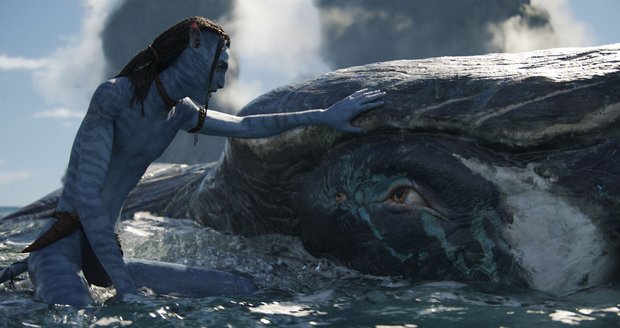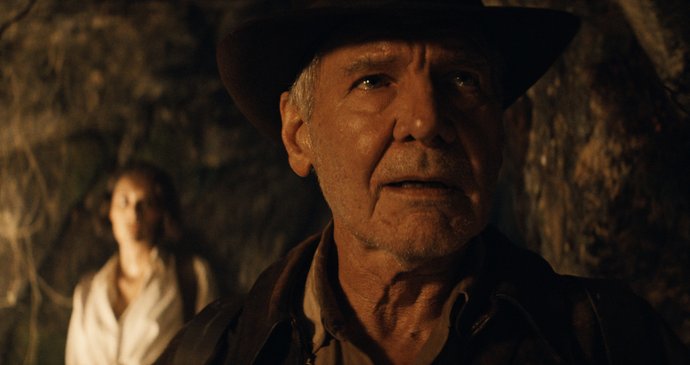The film novelty with Harrison Ford is the only work in the series that did not have George Lucas as the author of the theme – and the only one that was not directed by Steven Spielberg. Lucas sold his company, and thus the rights to the character of the adventurous archaeologist, to the Disney corporation in 2012. For him, he had James Mangold, valued for his biography of Cash Walk the Line or a comic book Logan, originally to direct a standalone Boba Fett film from the Star Wars universe. But the project fell through, so a fifth Indy could be created, with Harrison Ford, who had previously stated that “it’s simple: if he’s not there, the character won’t be”.
Ford was about to return to his next legendary role (after Han Solo from Star Wars and Deckard z Blade Runnera) convinced with a fat check that contained an eight-figure sum beginning with a six. The budget of the fifth part of the series finally reached almost three hundred million dollars, however, the actual amount is usually higher – and the figure is without advertising costs, which usually make up half of that for blockbusters. Z Tools of Destiny thus becoming one of the most expensive films of all time. It was surpassed only by two adventure spectacles from the pirate series (Pirates of the Caribbean: On Stranger Tides a Pirates of the Caribbean: At World’s End), superhero feats (Justice League, Avengers: Infinity War, Endgame a Age of Ultron), continued Avatar and for now the last part Fast and furious – and sometimes the first and third volumes of the new trilogy are also presented Star Wars (The Force Awakens, The Rise of Skywalker).
An expensive Ford model
In addition to Ford’s fee, the costs also climbed due to the pandemic filming, which caused delays in the theatrical release, and also for the cost of a method called de-aging: digital rejuvenation of actors (and actresses) during post-production. Over the past two decades or so, we have encountered both failed rejuvenation in earlier attempts (Jeff Bridges in the second Tronovi or The Rock v Central intelligence), as well as more successful ones in Marvel movies (Kurt Russell in others Guardians of the Galaxy or Robert Dosney Jr. in Iron Man 3 – and a clone of Hugh Jackman v The Logans).
“It didn’t offend me, I think it was relatively successful. The film confidently shows the actor’s face in a rejuvenated form repeatedly, returning to it and truly recalling how Ford looked several decades ago,” thinks Marie Barešová. “It worked well for me. But it’s hard to watch it dispassionately: when the image is distorted compared to the present, it’s alienating for me, not entirely comfortable to watch. Maybe it’s because I was used to the fact that in such cases a younger actor was cast who coped with the given role,” points out Marie, which bothered her. “However, I understand that it is being worked on in Tool of Destiny, why it refers to the period in which the previous parts took place, and how it is related to the following plot. Out of the plethora of effects and bombastic things, this irritated me the least,” Marie finds the justification for digital rejuvenation in a big-budget film full of tricks.
“Yes, sometimes there is an uncanny valley (= an unsettling feeling when one notices something inhuman on an apparently human, for example, on a humanoid robot or on a digitally modified appearance using deep fake or de-aging). It doesn’t help that the older Ford dubbed the younger version and his voice wasn’t particularly edited, so there’s a form of distanceMarek Slovák expresses himself critically from the beginning. “But I didn’t have a problem, because as it refers to the history of audiovisuals and how it plays with them on the formal side, I wasn’t an entirely absorbed viewer who would be involved in the story or the narration, because the film doesn’t even require it,” mentions Marek , why he doesn’t want realism or authenticity after the archaeologist’s adventures. “For me, de-aging was more acceptable in other images like Irish Martin Scorsese’s heaven Gemini Anga Lee. V The Irish it is a memory that is obscured, not doubly reliable, so I approached digital rejuvenation more. IN Gemini in turn, Will Smith Sr. met a younger-rejuvenated one who was supposed to be a clone, so I approached it within the genre narrative. In Indym, unlike the two films mentioned, de-aging is not framed in this way, even though it could be like a dream or a nightmare,” Marek evaluates how the rejuvenation went in comparison to other films, adding: “(Even so) it was de -aging one of the most successful.”
Is Indy Getting Cracked?
Tool of Fateas well as his time Crystal skull, had its gala premiere at the Cannes Film Festival. After her, rather negative reviews began to appear. On the contrary, the audience after the official premiere was somewhat more positive. What do critics of Ball Lightning think? “Slightly above average work. It was problematic for me how much the fifth part moved away from what the first four parts represented for me: how they worked with the adventure film genre, how classic tricks were used, how much it represented classic cinematography for me,” Marie Barešová does not forgive the comparison. “The current installment coming to theaters has come awfully close to what all the other adventure/action movies look like: fast editing and pace, changing locations, endless, not particularly surprising or interesting chases, footage that is too long… It was not easy to sit through it without something appearing that would excite me, at least within the genre. For me, it’s more of a disappointment,” says Marie when comparing the fifth part with the first and third in particular.
“If you have any idea of Indiana Jones, then the last part does not fulfill it. But I think there is nothing like a uniform Indiana Jones. It should be noted that Raiders of the Lost Ark and Temple of Doom would work as standalone pictures, each referencing a slightly different tradition of trash spectacle. The Last Crusade is told much more classically and meets the conventional demands of the audience in terms of character development. The quartet is clearly a game: a character associated mainly with serials from the 1930s is transferred to the world of stories of the 1950s, inspired by a number of genres that dominated the 1950s: eco-horror, science fiction with aliens, melodrama… The Tool of Destiny does something similar. Indiana Jones is understood and transferred to the sixties/seventies, but as we know them from the audio-visuals of the time, and so it takes place from a historical war film (e.g. Train) via a political thriller with Nazis (Marathoner, Boys from Brazil) to epic historical sandals (Cleopatra, Spartacus, Conquest of Syracuse) and something that was very typical of American sixties genre cinema,” Marek counter-argues that Indy was only unique in that he was always fooling around with trash.

“It should also be mentioned that this is not the Indiana Jones we know. For one thing, Indy never had a complete or unified form. He’s a slightly different character in every scene of number one, he really only starts to develop from number three onwards, including this part. In The Tool of Destiny, we follow from the beginning someone who was once Indiana Jones, and now through the new adventure he is forced into, he becomes the Indiana Jones we remember him again,” Marek responds to the criticisms that he is/isn’t Indian, which are often heard. “The concept of the film also corresponds to this, which refers not only to 60s and 70s audiovisuals, but also to how Spielberg conceived ‘his’ Indiana Jones, including various stylistic procedures. It makes sense that when Jones first flies the plane, we don’t see the typical map with the trajectory showing the way, and why later, when he puts on his hat, whip and his typical clothes, the map appears along the way,” Marek gives an example of how the five applies to the traditions of the previous parts. “One could go on and on about how it is informed by the past of audiovisual and the various inspirations and sources it plays with, refers to, and reworks. Satisfaction for me, quite a lot of satisfaction.”
Indiana Jones and the Tool of Fate It may have disappointed Maria, but it’s still an above-average action adventure for her for a modern audience 70 %. Marek is significantly more satisfied, because he approaches the Jones games as a game with the history of cinematography – and this game was fun for him 90 %.
Not only for Indy, but also for Ball Lightning, it was the last crack of the critical whip after a year of operation. This is also why this time the podcast is more nutritious and completely dedicated to Indiana Jones. In the roughly one-hour footage, you can listen to Mark and Marie’s opinion on the character of Helena (played by Phoebe Waller-Bridge) discussed in chauvinist internet circles, a comparison of the direction of Spielberg and Mangold, an analysis of the final act (be careful, spoilers!), a part dedicated to handling the “Jones” with audio-visual history and a ranking of the Indiana Jones films, as well as tips for other adventure titles.



:quality(85)/cloudfront-us-east-1.images.arcpublishing.com/infobae/RHWJEWGON5HAXCIEURZXWUUBWI.jpg?w=150&resize=150,150&ssl=1)



:quality(85)/cloudfront-us-east-1.images.arcpublishing.com/infobae/GZTBTQGGZ5A75PXZENAASPPNAQ.jpeg?w=150&resize=150,150&ssl=1)
